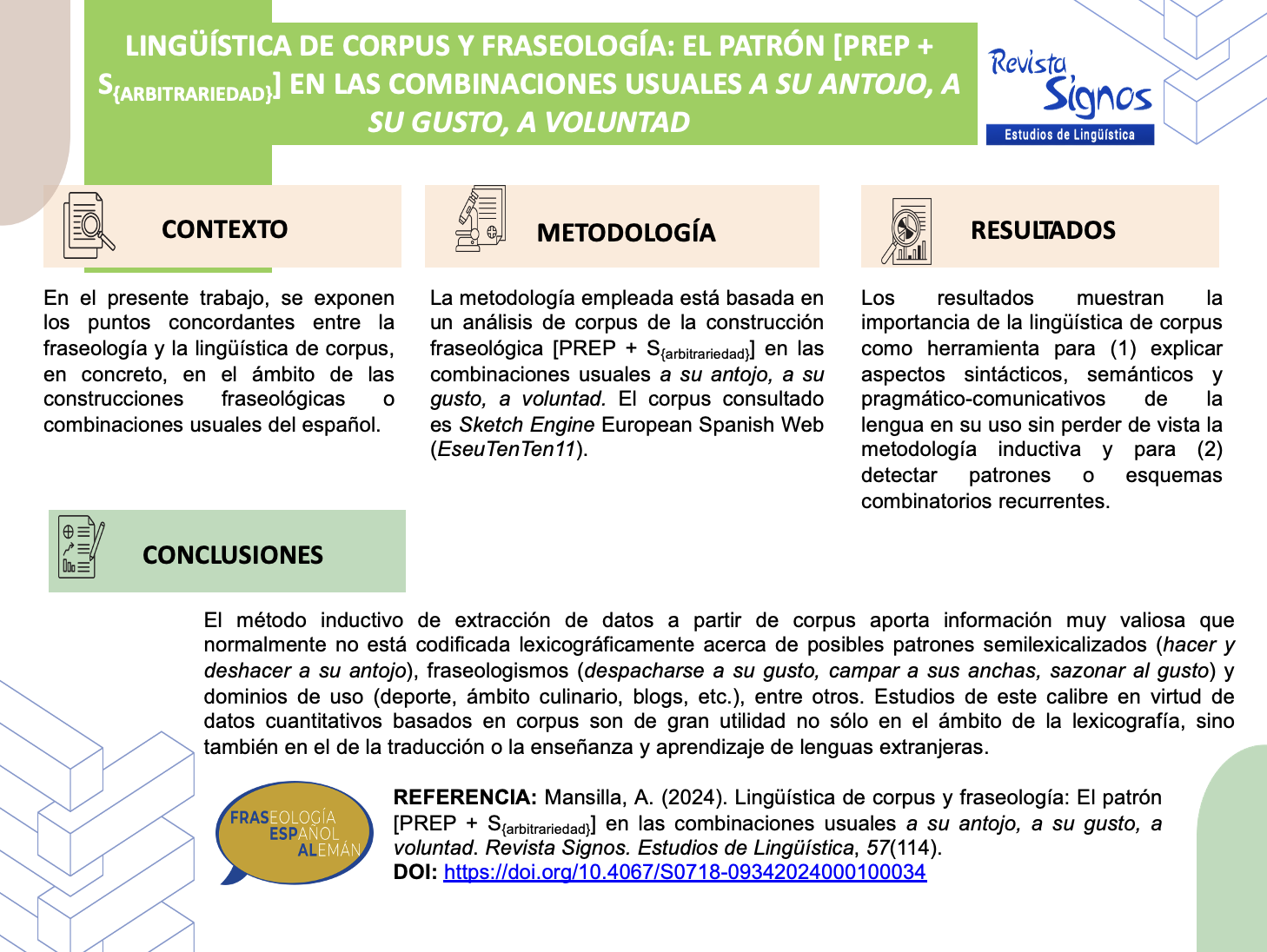Corpus Linguistics and Phraseology: The Pattern [PREP + S {arbitrariness}] in the Usual Combinations ‘a su antojo’, ‘a su gusto’, and ‘a voluntad’
Keywords:
corpus linguistics, phraseology, inductive approach, usual combinations, phraseological patternAbstract
The article provides a brief overview of points of convergence between phraseology and corpus linguistics in the field of the so-called phraseological constructions or usual combinations. To do so, we suggest carrying out a study of the phraseological construction [PREP + S {arbitrariness}] in the usual combinations a su antojo, a su gusto, and a voluntad based on the questions posed in the corpus Sketch Engine European Spanish Web corpus (EseuTenTen11). Once the theoretical framework has been developed, the internal cohesion between noun and preposition and the lexicographic meanings of the nouns that are part of the construction are described. Furthermore, external cohesion based on the syntagmatic profile (co-ocurrence with some verbs or other lexical units) and on the domain of use is analyzed, in other words, the main meanings of the construction are inductively determined from a random sample of occurrences. The results show the importance of corpus linguistics as a tool to (1) explain facts about syntactic, semantic, and communicative-pragmatic aspects of the language (authentic instances in context) with attention to the inductive and empirical methodologies used as a complement to introspection-based assumptions of the language and (2) to identify recurrent lexical patterns.

Published
How to Cite
Issue
Section
License
Copyright (c) 2024 Revista Signos. Estudios de Lingüística

This work is licensed under a Creative Commons Attribution 4.0 International License.
Copyright agreement:
Authors who have a manuscript accepted for publication in this journal agree to the following terms:
Authors will retain their copyright and grant the journal the right of first publication of their work by means of this copyright agreement document, which is subject to the Creative Commons Acknowledgment License that allows third parties to share the work provided that its author and first publication in this journal are indicated.
Authors may adopt other non-exclusive license agreements for distribution of the published version of the work (e.g., depositing it in an institutional repository or publishing it in a monographic volume) as long as the initial publication in this journal is indicated.
Authors are allowed and encouraged to disseminate their work via the internet (e.g., in institutional publications or on their website) before and during the submission process, which can lead to interesting exchanges and increase citations of the published work (read more here).


